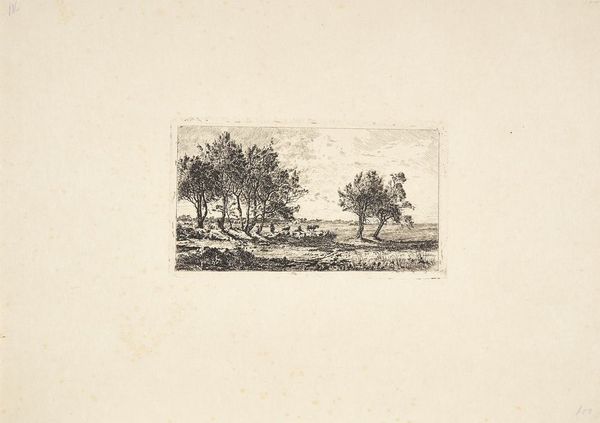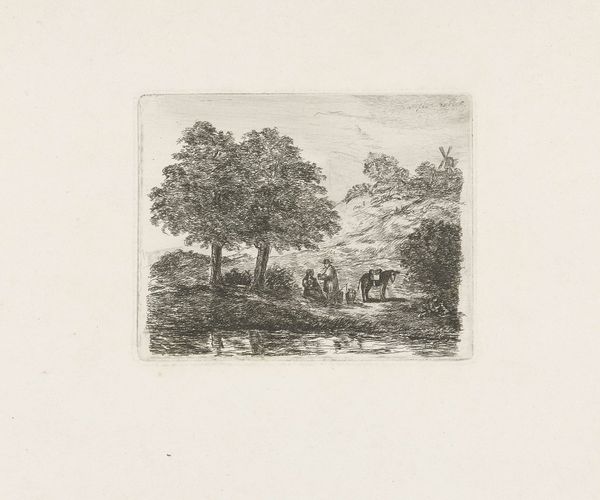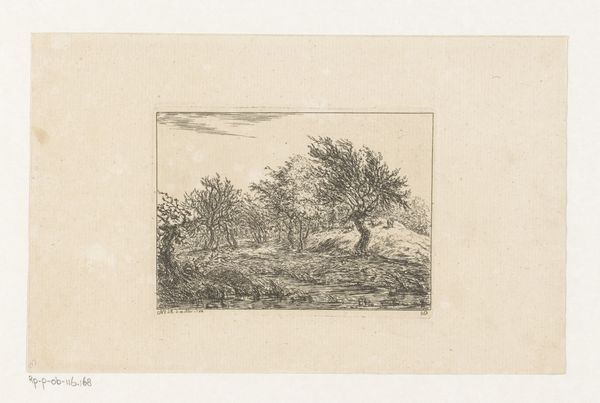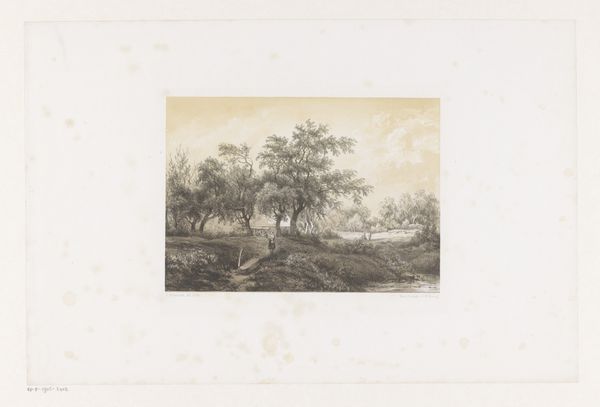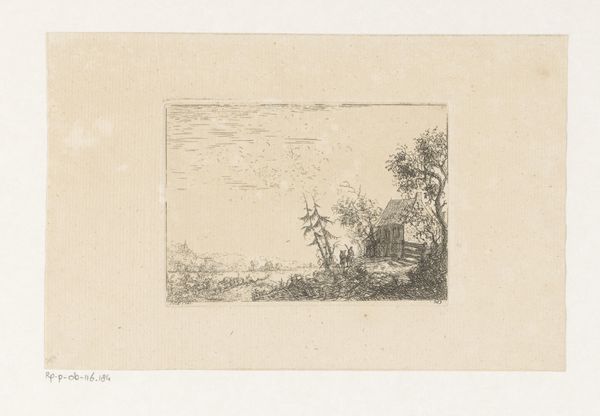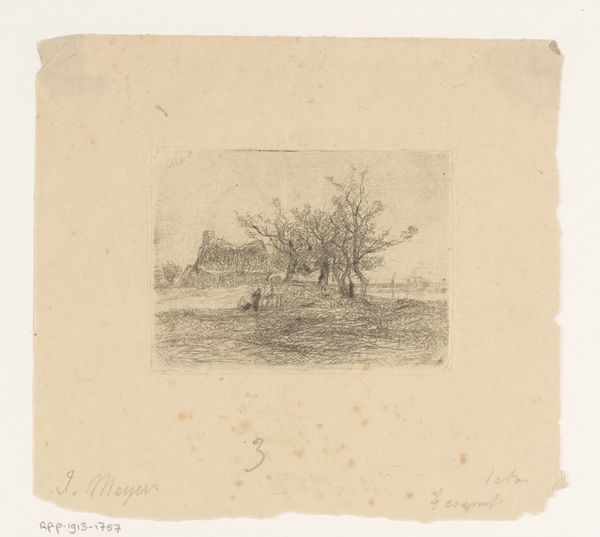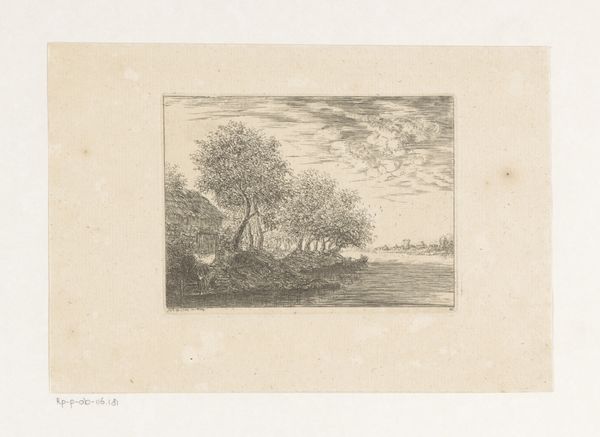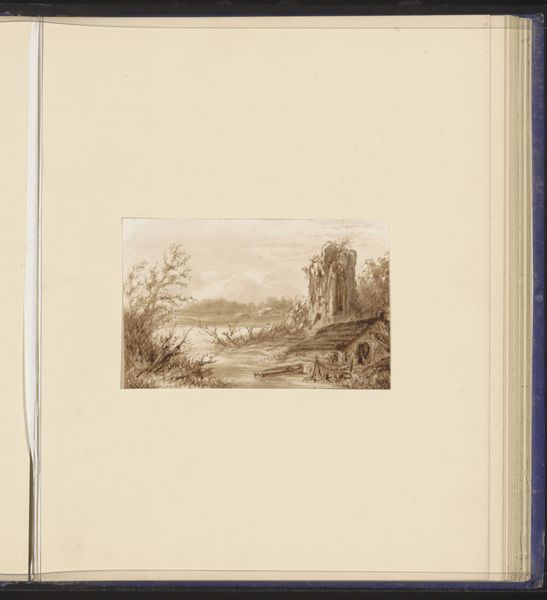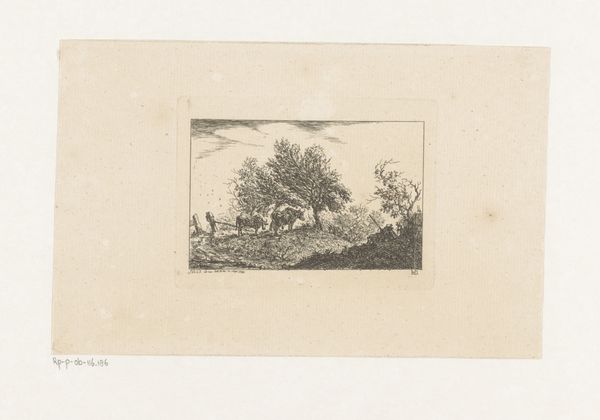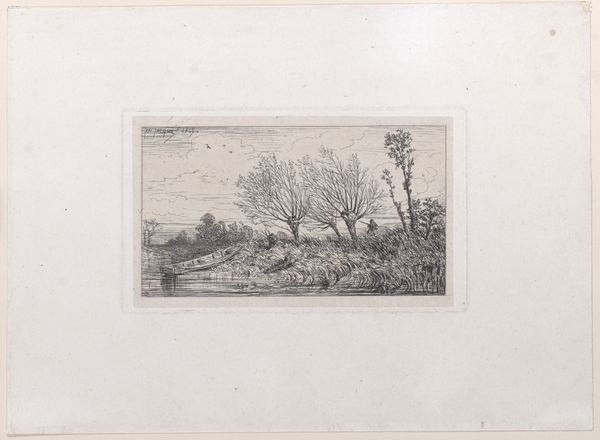
etching, engraving
#
etching
#
old engraving style
#
landscape
#
engraving
#
realism
Dimensions: width 88 mm, height 51 mm
Copyright: Rijks Museum: Open Domain
Editor: Here we have Jacobus van Gorkom Jr.'s "Landschap met wilgen," dating sometime between 1837 and 1880. It's an etching and engraving that gives me a feeling of quiet solitude, perhaps even a little melancholy, given the solitary trees and muted tones. What social context can you bring to our understanding of this small landscape print? Curator: Considering the time period and the prevalence of landscape art, this piece exists within a complex web of social and political influences. Ask yourself: What are people meant to *do* with this kind of imagery? Editor: Enjoy the pretty scenery? Decorate their homes? Curator: It's deeper than that. Consider the rising middle class during this era and their increasing desire for cultural refinement. Landscape prints like these became accessible symbols of status and good taste, weren't they? Editor: Ah, so owning a landscape print wasn't just about the art itself but about signaling something about yourself to your social circle? Curator: Precisely! The print is as much a signifier of aspiration as it is a depiction of nature. It allows the owner to participate, through consumption, in notions of refined sensibility. How does that alter your understanding of that "melancholy" feeling? Could it also be a feeling of cultivated sensibility, for example? Editor: That's really fascinating. It changes how I see the work; it becomes less about a direct expression and more about participating in a larger social game. Curator: Indeed. Understanding art is rarely just about the artwork; it's about the dynamic interplay between the piece, the artist, and the ever-evolving societal context that surrounds them. Editor: This definitely highlights the social dimensions that go unseen when only focusing on what's in the art object itself.
Comments
No comments
Be the first to comment and join the conversation on the ultimate creative platform.
